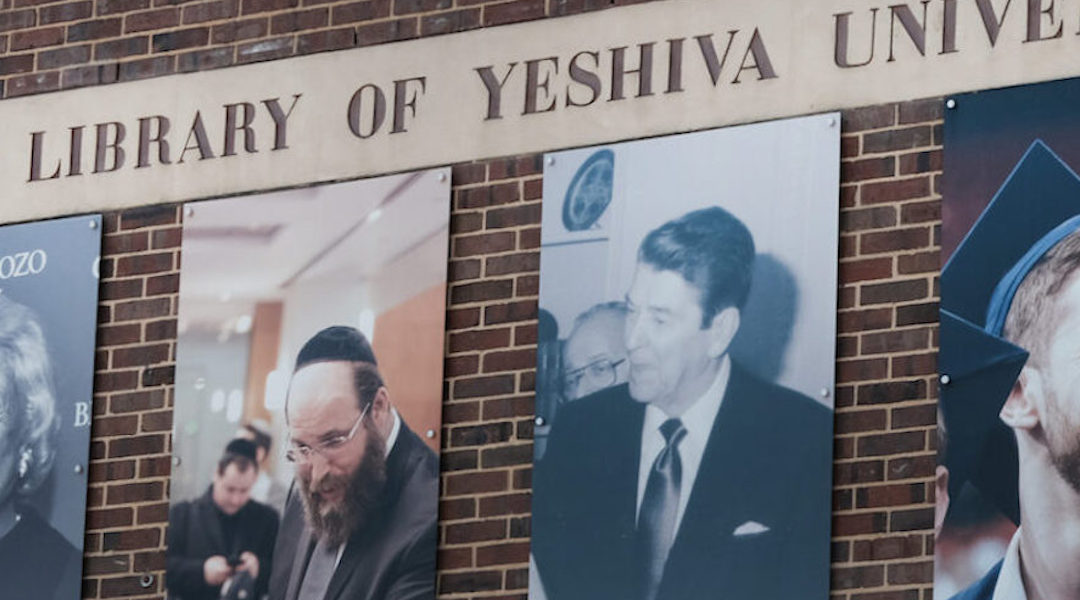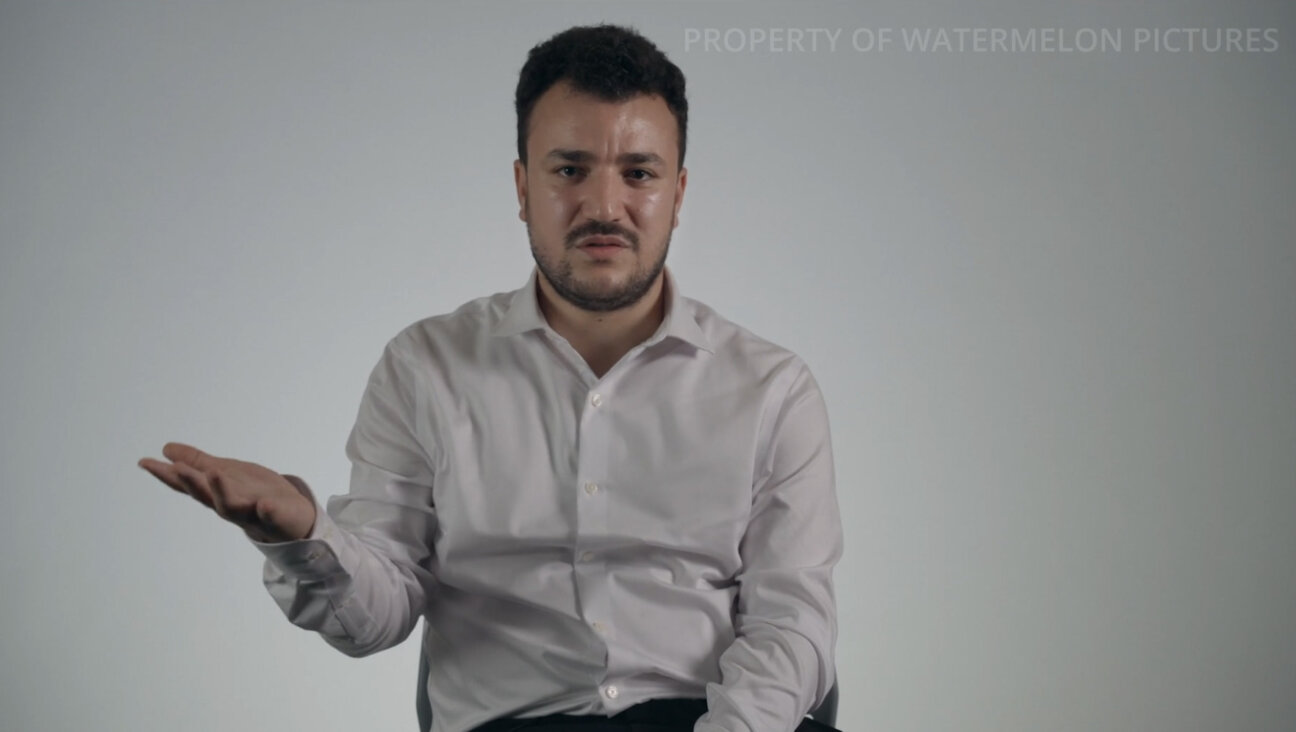Amid Jewish Cultural Renaissance, Leading Communal Arts Booster Is Retooling Identity
In the wake of seismic shifts in the Jewish cultural landscape, one of the longtime central addresses for Jewish culture is waging a struggle to remake itself.
According to a strategic plan poised to be passed by its board of directors this week, the newly renamed Foundation for Jewish Culture is setting out to “become THE destination for those interested in culture as a vehicle for exploring Jewish experience.” Some see the plan as an effort to shed the foundation’s recently acquired reputation as a financially troubled organization with an overly broad mandate, and to reinvent itself as a streamlined operation focusing on individual artists and scholars.
For decades, the National Foundation for Jewish Culture trumpeted the message that arts and culture could serve as an alluring point of entry into Jewish identity. Now that large swaths of the Jewish establishment have come around to this perspective, it seems the foundation may have become the victim of its own foresight. Over the past decade, the landscape has shifted dramatically as philanthropists and family foundations have picked up on the link between Jewish culture and identity, and poured millions into the cultural coffers as a result. It has been a boon for young Jewish adults — the past decade has seen an explosion of Jewish magazines, books and music, produced by and marketed to urbane 20- and 30-somethings — but for the foundation and its relatively new president and CEO, Elise Bernhardt, the proliferation of privately funded Jewish cultural ventures has forced them to reassess their place on the map.
“My mandate was to refocus the organization, figure out what the current landscape of Jewish culture looked like and how we could be useful and respond,” said Bernhardt, who joined the organization in June 2006, in an interview at the foundation’s office in Manhattan.
Bernhardt — who spent seven years as executive director of the experimental performance space The Kitchen, and who came with no ties to the organized Jewish world — has ruffled a few feathers, both inside and outside the organization. Beloved programs have been dropped, staff cutbacks instituted and rumors started after the suspension of the Jewish Cultural Achievement Awards. Bestowed in past years on such luminaries as Saul Bellow, Philip Roth, Sidney Lumet, Joan Micklin Silver, Will Eisner and others, the ceremony had become the foundation’s signature high-profile event.
But others defend Bernhardt’s tightening of the reins, describing the aftershocks as the inevitable pangs of an organization in transition.
“Any time you take an organization and try to focus it when it’s been all things to all people, you’re going to have some of the people unhappy,” said Tom Freudenheim, who has been a foundation board member for more than 25 years and chaired the search committee that hired Bernhardt.
Founded in the wake of the Holocaust by the Council of Jewish Federations, the American Jewish charitable system — which for decades funded the foundation to the tune of about $600,000 a year — created the foundation in large part to help re-establish the cadre of Jewish academics decimated by the Nazis. Its efforts paid off, as hundreds of young scholars re-entered the field of what is now known as “Jewish Studies” and populated American campuses. The foundation’s mission expanded significantly in the late 1970s to include arts programming under its umbrella. In 1992, Richard Siegel, who served as the foundation’s executive director until June 2006, officially issued its first strategic plan, which put the arts on equal footing with scholarship.
In 2005, the foundation commissioned a study conducted by social researchers Steven M. Cohen and Ari Kelman to examine the place of culture in the lives of young New York Jews. The study, funded by New York’s UJA-Federation and touted by the NFJC as groundbreaking, showed that Jews in their 20s and 30s — who often feel isolated by traditional Jewish institutions — are, in fact, finding a way to connect with their Jewish identity through the arts.
Bernhardt said that one successful response to this demand has been the Six Points Fellowship, funded with a $1 million grant from New York’s UJA-Federation and developed in conjunction with Avoda Arts, a not-for-profit Jewish arts education group, and JDub Records, an independent Jewish music label. The fellowship provides a living stipend for two years to 12 artists across the disciplines — in music, visual art and the performing arts — who work with Jewish themes. In addition to directly supporting the artists, the program also offers professional development workshops to help them get their work in the public eye.
Avi Decter, who is executive director of the Jewish Museum of Maryland and is a longtime consultant to museums and cultural institutions, including the FJC, noted it’s not only Jewish dollars that have become more tailored to the arts agenda. Even non-Jewish cultural foundations — once the province of more mainstream institutions — are now sinking money into Jewish undertakings. For example, the Jewish Museum of Maryland, Decter said, recently won $148,000 in grant monies from the Institute of Museum and Library Services to put up an exhibit on the history of a Baltimore synagogue. That would have been unheard of 40 years ago, he said.
Despite the competition, Bernhardt is undeterred. In fact, she has set for herself a goal of tripling the foundation’s endowment, which currently stands at $3 million, over the next five years.
“I don’t think I’m pie in the sky,” she said. “I think the capacity of the Jewish philanthropic world is such that this shouldn’t be hard to do.”
Until now, though, Bernhardt has been fighting an uphill battle to move the foundation toward financial stability. Though Siegel, her predecessor, is widely viewed as a visionary responsible for placing the arts agenda at the fore of the broader Jewish communal agenda, observers say — and Siegel himself admits — that he often spent more than the budget allowed in order to accommodate his far-reaching goals. According to Siegel, foundation expenses ran about $200,000 over budget every year. When Siegel left for Los Angeles last summer to join his wife, Laura Geller — the rabbi of Temple Emanuel, a major Reform synagogue in Beverly Hills, Calif. — he also left his successor at the foundation with a fiscal mess.
Bernhardt declined to specify the amount of deficit that she inherited, but she noted that the $200,000 annual deficit that Siegel identified stretched back for a number of years. (In 2006, the foundation’s total budget was $2.3 million.) Moreover, she said, the foundation’s bookkeeping was in disarray.
“The way that finances were communicated was very complicated,” Bernhardt said. “I don’t think there was any malfeasance, but it was hard to get a handle on what was going on.”
Bernhardt said that she has since rectified the organization’s finances by being “very disciplined” over the course of the past year. The foundation, she said, closed the 2006 books with an operating surplus and a cash reserve of close to $200,000.
But to get to this point, Bernhardt has taken certain controversial steps. She said that the foundation would no longer throw its weight behind significant “one-off” events, like its 2004 commissioning of choreographer Paul Taylor to create a new dance work in honor of the 350th anniversary of Jewish life in America. In addition, she suspended the foundation’s achievement awards ceremony, though — contrary to rumors — only temporarily. For more than 15 years, the foundation disbursed awards at a lavish annual gala dinner, which also served a major fundraising purpose for the foundation. According to Siegel, the awards dinner brought in anywhere between $50,000 and $300,000 a year.
More significant, though, have been the changes to the staff: Since Bernhardt took over, a total of five people have departed, out of 10 full-time and three part-time staff members, including both those who were let go and those who left of their own accord. In recent weeks, Nancy Schwartzman, the well-regarded program director responsible for overseeing of the Lynn and Jules Kroll Fund for Jewish Documentary Film, announced her resignation after working for six years at the foundation. Schwartzman declined to comment for this article; instead she referred a reporter to her resignation letter, which stated that she was leaving to devote more time to her own film project.
Another former employee, who requested anonymity, expressed dissatisfaction with the way that Bernhardt has handled the organizational restructuring. The employee, also among those who left voluntarily, said that Bernhardt enacted sweeping changes without communicating to personnel the rationale for them. Furthermore, the former employee said, Bernhardt was rarely in the office at the start of her tenure, and this exacerbated the feeling that she was making decisions without consulting those around her.
“She was never in the office, yet she was making enormous changes,” the former employee said. “When she was in the office, it seemed like there were a lot of things happening, but you never heard about them, because the door was closed.”
In response, Bernhardt noted that she was forced to begin her tenure in a part-time capacity because her mother was dying of cancer, which led her to be out of the office frequently. Bernhardt also said that she had to “move really quickly” once she figured out the depth of the foundation’s financial woes.
She also scaled back some of the foundation’s stalwart programs. While the core programs remain intact — including the documentary film fund, a fund for doctoral dissertation fellowships in Jewish studies, and the Goldberg Prize for an emerging Jewish fiction writer — some critics lament the loss of focus on literature. In the past year, for example, Bernhardt raised some eyebrows when she discontinued a literary supplement that was published by the foundation and appeared in Jewish newspapers.
“The foundation should be paying a lot more attention to the tremendous flowering of American Jewish literature,” said Jerome Chanes, the foundation’s former associate executive director. Chanes left during an organizational restructuring in 2002.
Bernhardt defended her decision by noting the emergence of such Jewish cultural outlets as Nextbook.org — which produces an online magazine, publishes books and sponsors nationwide public events — as having supplanted many of the functions of the foundation, which in previous years was among the only Jewish organizations with a substantial literary component.
Paul Zakrzewski, the foundation’s program director of literature and scholarship, defended Bernhardt’s choices. One such choice was the decision to cease publication of the literary supplement, which Zakrzewski said was a longtime money loser for the cash-strapped organization. Zakrzewski said that while on one level, the supplement’s demise is a loss for the foundation, it also gave him an opportunity “to create some new directions.” Among the projects in the works, he said, is a daylong workshop for established and emerging writers on Jewish themes to learn how to better market their books.
As part of the organization’s restructuring, it is also taking a more back-seat role with a group that has traditionally fallen under its purview, the Council of American Jewish Museums. CAJM, comprising some 75 Jewish museums in North America, will now be running its annual conference under its own auspices rather than out of the foundation’s offices.
And, in another indication of changes at the foundation, two longtime board members recently resigned. Marilyn Waldman, a San Francisco-based freelance writer who served as an adviser to the now-defunct literary supplement, and Marjory Slavin, a philanthropist based in Tucson, Ariz., both left after some 15 years of service.
Reached by the Forward, Slavin said that she resigned for personal health reasons and because she thought it was time for a new crop of trustees. “As a general principle, I believe boards need new blood,” she said.
Other trustees on the 45-member board have increased their commitment to the foundation, Bernhardt said, by stepping up their contributions. Sizable gifts came from New York-based board members Lynn Kroll and Carol Spinner, as well as from Anita Wornick, based in San Francisco, and from Sylvia Neil in Chicago.
Moreover, despite rumblings from some corners, the board’s approval this week of Bernhardt’s new strategic vision seems to indicate support for her plan for the foundation’s future — a goal she said couldn’t come soon enough.
“I get impatient,” she said. “I’d like it to change faster, but I realize that cultural changes within an institution do take time.”
The Forward is free to read, but it isn’t free to produce

I hope you appreciated this article. Before you go, I’d like to ask you to please support the Forward.
At a time when other newsrooms are closing or cutting back, the Forward has removed its paywall and invested additional resources to report on the ground from Israel and around the U.S. on the impact of the war, rising antisemitism and polarized discourse.
Readers like you make it all possible. We’ve started our Passover Fundraising Drive, and we need 1,800 readers like you to step up to support the Forward by April 21. Members of the Forward board are even matching the first 1,000 gifts, up to $70,000.
This is a great time to support independent Jewish journalism, because every dollar goes twice as far.
— Rachel Fishman Feddersen, Publisher and CEO
2X match on all Passover gifts!
Most Popular
- 1

News A Jewish Republican and Muslim Democrat are suddenly in a tight race for a special seat in Congress
- 2

Film & TV What Gal Gadot has said about the Israeli-Palestinian conflict
- 3

Fast Forward The NCAA men’s Final Four has 3 Jewish coaches
- 4

Fast Forward Cory Booker proclaims, ‘Hineni’ — I am here — 19 hours into anti-Trump Senate speech
In Case You Missed It
-

News Who would protect New York Jews better? Cuomo and Lander trade attacks on the campaign trail
-

News Rabbis revolt over LGBTQ+ club, exposing fight over queer acceptance at Yeshiva University
-

Opinion In Qatargate fiasco, Netanyahu’s ‘witch hunt’ narrative takes cues from Trump
-

Yiddish די הגדה ווי אַ לעבעדיקער דענקמאָל פֿון אַשכּנזישער פּאָעזיעThe Haggadah as a living monument to Ashkenazi poetry
אַמאָל זענען די פּייטנים, מיסטישע דיכטער־וויזיאָנערן, געווען אויבן־אָן בײַ די פֿראַנצויזישע און דײַטשישע ייִדן.
-
Shop the Forward Store
100% of profits support our journalism
Republish This Story
Please read before republishing
We’re happy to make this story available to republish for free, unless it originated with JTA, Haaretz or another publication (as indicated on the article) and as long as you follow our guidelines.
You must comply with the following:
- Credit the Forward
- Retain our pixel
- Preserve our canonical link in Google search
- Add a noindex tag in Google search
See our full guidelines for more information, and this guide for detail about canonical URLs.
To republish, copy the HTML by clicking on the yellow button to the right; it includes our tracking pixel, all paragraph styles and hyperlinks, the author byline and credit to the Forward. It does not include images; to avoid copyright violations, you must add them manually, following our guidelines. Please email us at [email protected], subject line “republish,” with any questions or to let us know what stories you’re picking up.












